Y5 Shifting Settings
£3.00
KS2 National Curriculum:
✓ Exploring narrative changes in location, time, and mood
✓ Writing connected events showing setting shifts
✓ Using cohesive devices to link paragraphs
✓ Peer evaluation using success criteria
This lesson looks in detail at the four main reasons why the setting in a story can change: the action in the story moves to a different setting, the characters in the story move to a different setting, the setting stays the same but the time of day changes and the setting stays the same but the weather changes. Activities include answering higher and lower order questions.
There is a five-minute evidence-based CPD activity at the end of this lesson which will develop classroom teachers’ skill set. This CPD consists of a research extract on self-assessment with a five-minute activity based on this extract.
Description
Recommended Year Group: Year 5
Focus: Understanding why and how story settings shift
Skills Developed:
• Exploring narrative changes in location, time, and mood
• Writing connected events showing setting shifts
• Using cohesive devices to link paragraphs
• Peer evaluation using success criteria
📘 National Curriculum Links:
• Reading – Comprehension: Recognise how setting supports story progression
• Writing – Composition: Use paragraphing and connectives for cohesion
• Spoken Language: Discuss the purpose of setting change
• Thinking and Learning: Structure, collaboration, paragraph control
These evidence-based learning (EBL) lessons are based on classroom practice that has been proven, by research, to maximise thinking, learning and attainment. From an extensive review of educational research, we identified the eight key classroom thinking and learning skills that were common across these research papers. We named these eight key skills “EBL skills”.
EBL skills have been proven by research to maximise learning because they combine the most productive thinking skills with the most effective learning behaviours. Each of our evidence-based learning lessons uses the English curriculum as a framework through which the eight EBL skills are delivered.
Teachers also have the opportunity to add to their own skill set or refresh their existing skills with our five-minute CPD activity, based on one of the EBL skills used in this lesson.
The skills in bold below are the EBL skills developed in this Familiar Settings lesson. Click on each skill to learn more about that skill.
- Collaboration
- Thinking Skills
- Peer Assessment
- Peer Teaching
- Self-Assessment
- Metacognition
- Self-Regulation
- Independent Learning
1 review for Y5 Shifting Settings
Only logged in customers who have purchased this product may leave a review.
Related products
-
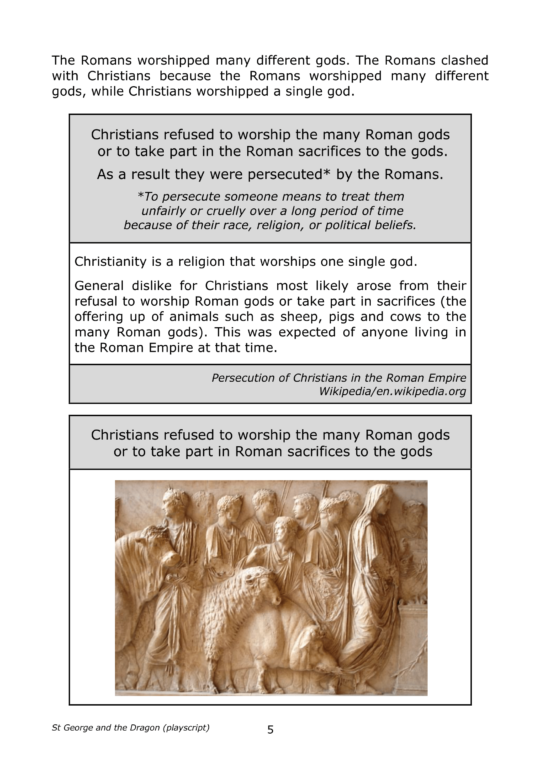

Y6 St George and the Dragon (play-script)
£3.00 Add to basket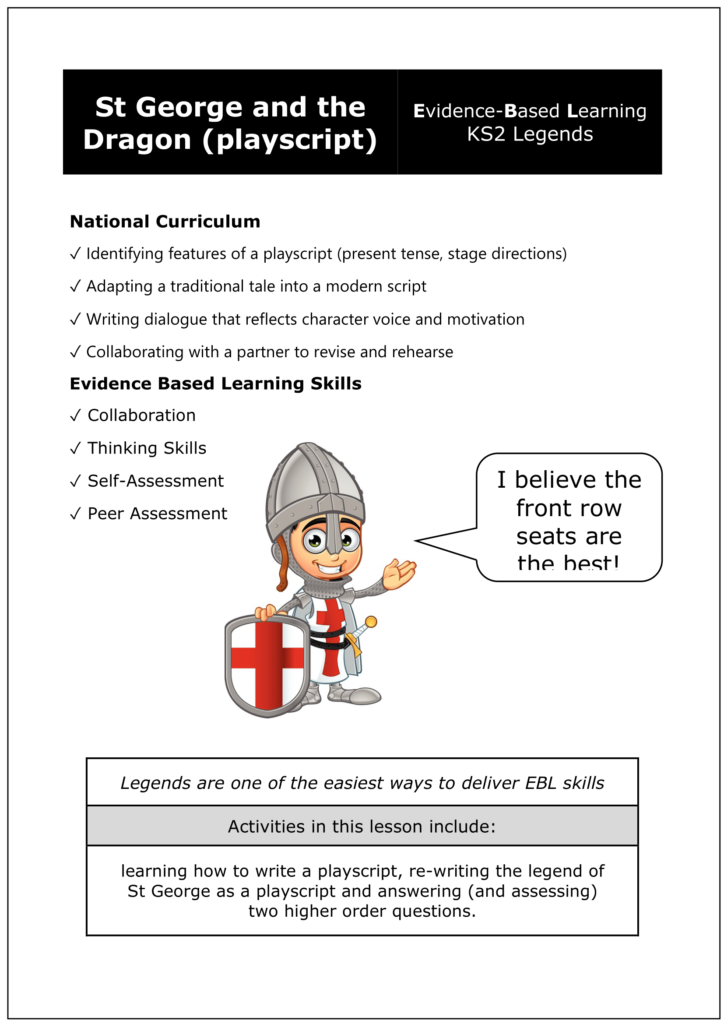 £3.00Add to basket
£3.00Add to basketKS2 National Curriculum:
✓ Identifying features of a playscript (present tense, stage directions)
✓ Adapting a traditional tale into a modern script
✓ Writing dialogue that reflects character voice and motivation
✓ Collaborating with a partner to revise and rehearse
Activities in this lesson include learning how to write a play-script, re-writing the legend of St George as a play-script and answering (and assessing) two higher order questions.
There is a five-minute evidence-based CPD activity at the end of this lesson which will develop classroom teachers’ skill set. This CPD consists of a research extract on self-assessment with a five-minute activity based on this extract.
VIEW -


Y6 Merry Christmas
£3.00 Add to basket £3.00Add to basket
£3.00Add to basketKS2 National Curriculum:
✓ Reading and understanding a suspenseful story opening
✓ Writing a suitable continuation in style and tone
✓ Applying verb types and sentence variation
✓ Reflecting on choices through self-assessmentThis lesson involves looking at a short Christmas extract in detail to examine the use of words and the use of story writing conventions. Activities include answering higher and lower order questions and a creative writing activity that finishes the extract.
There is a five-minute evidence-based CPD activity at the end of this lesson which will develop classroom teachers’ skill set. This CPD consists of a research extract on self-regulation with a five-minute activity based on this extract.
VIEW -


Y5 Nailing a Setting
£3.00 Add to basket £3.00Add to basket
£3.00Add to basketKS2 National Curriculum:
✓ Identifying setting components: place, time of day, time period, and weather
✓ Analysing visual cues and using setting vocabulary
✓ Teaching peers to consolidate understanding
✓ Generating original examples through partner workThis lesson looks at the four possible features of a story setting: the place, the time period, the time of day and the weather. It also looks at real and imaginary settings. Activities include answering higher and lower order questions.
There is a five-minute evidence-based CPD activity at the end of this lesson which will develop classroom teachers’ skill set. This CPD consists of a research extract on peer teaching with a five-minute activity based on this extract.
VIEW -


Y6 Writing a Mystery Story
£3.00 Add to basket £3.00Add to basket
£3.00Add to basketKS2 National Curriculum:
✓ Planning and writing a full mystery story
✓ Using suspense techniques and plot structure
✓ Paragraphing, dialogue, and character development
✓ Reviewing and improving narrative with peer feedbackThis lesson focuses on a creative writing task – writing an account of being in a deserted house, late at night, for a mystery story. This creative writing task is scaffolded – it provides the tools for pupils to improve their creative writing by using both action and linking verbs, powerful verbs, ellipses and dashes, as well as varying sentence length for effect.
There is a five-minute evidence-based CPD activity at the end of this lesson which will develop classroom teachers’ skill set. This CPD consists of a research extract on self-assessment with a five-minute activity based on this extract.
VIEW
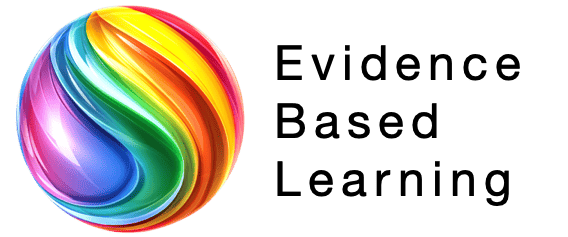


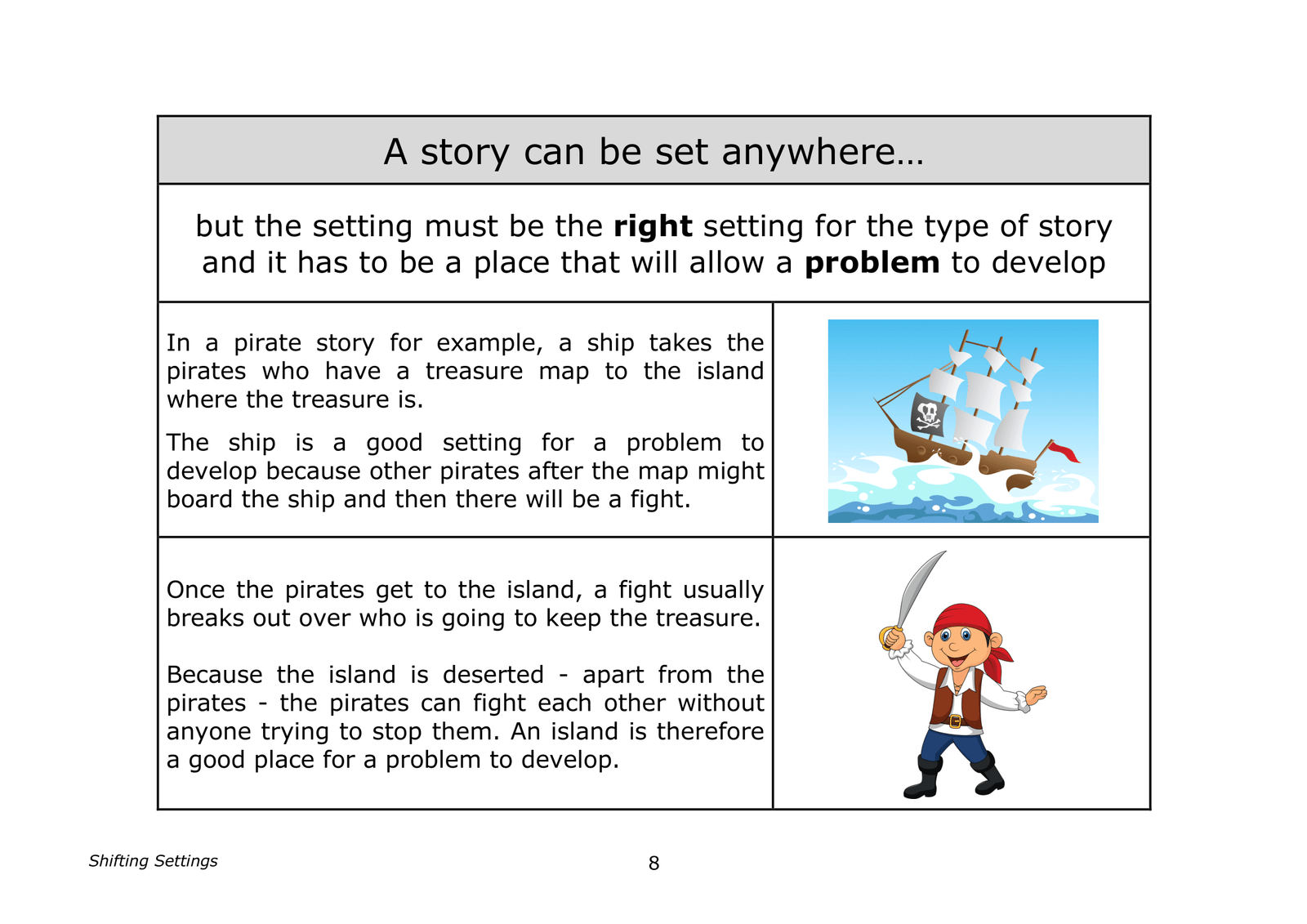

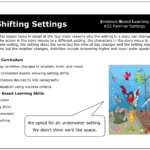
Philipem (verified owner) –
We asked a.i. to review this lesson. This is what it said:
Explore Setting Changes with the Engaging “Shifting Settings” Lesson
★ ★ ★ ★ ★
Upper primary teachers are always on the hunt for high-quality, evidence-based resources that build critical thinking skills while delivering core literacy instruction. The “Shifting Settings” lesson, part of the Familiar Settings unit, is a fantastic option that checks both of those boxes.
This fourth lesson in the 11-part unit dives deep into the reasons why a story’s setting may change over the course of the narrative. Students analyse the four main causes for a setting shift: the characters move, the action relocates, the time of day changes, or the weather changes. The activities get students thinking by having them identify examples of each reason from popular stories and explain their reasoning.
But “Shifting Settings” does more than just reinforce comprehension of story elements. It intentionally develops four key evidence-based learning (EBL) skills proven to maximise student learning:
1. Collaboration – Partner activities promote productive discussions and listening.
2. Thinking skills – The questioning sequences build both higher and lower order thinking capacities.
3. Peer teaching – Students solidify their own understanding by explaining concepts to a classmate.
4. Self-assessment – Evaluating and improving their own work fosters autonomy and metacognition.
As an added bonus, the lesson includes a 5-minute CPD (continuing professional development) segment focused on the research behind self-assessment. It guides teachers through the core benefits of this EBL skill and has a simple activity to make the concepts more accessible for students.
With its emphasis on an often overlooked but important narrative element like setting changes, combined with the integration of multiple EBL skills and teacher professional development, the “Shifting Settings” lesson is an absolute winner. It’s an engaging, evidence-based way to simultaneously build literacy skills, cognitive abilities, and evidence-based learning competencies.
I give this resource a well-deserved 5 out of 5 stars. It’s definitely one you’ll want to add to your year 5 or 6 teaching toolkit for an enriching way to advance student learning and meet core objectives. Highly recommended!